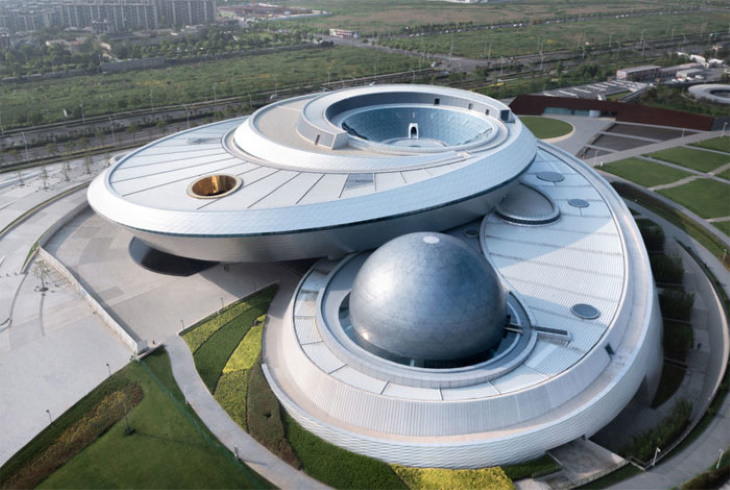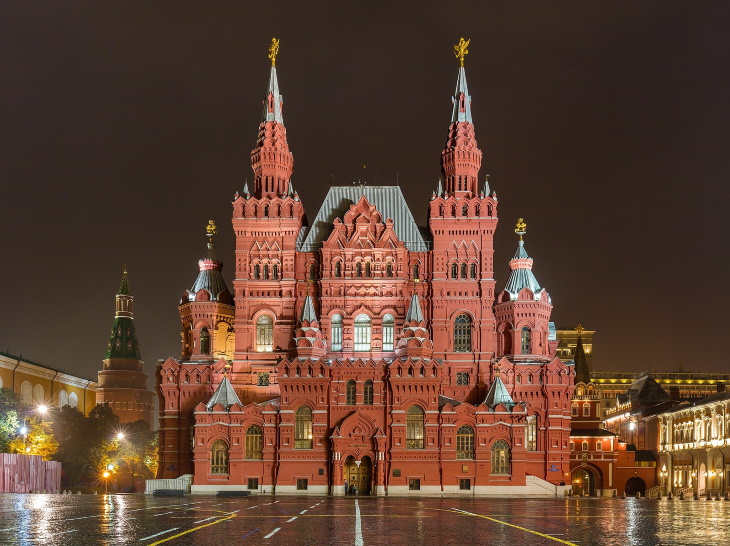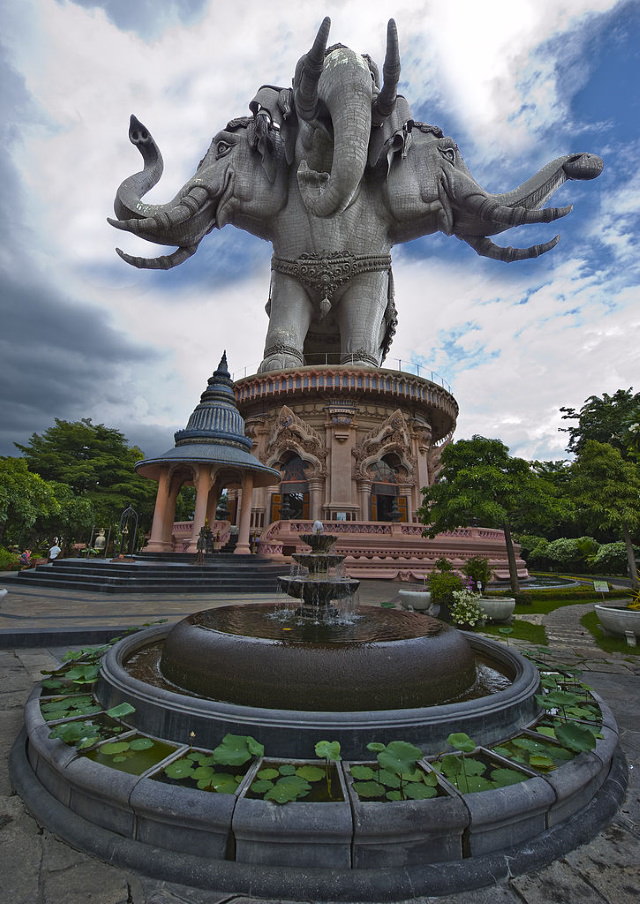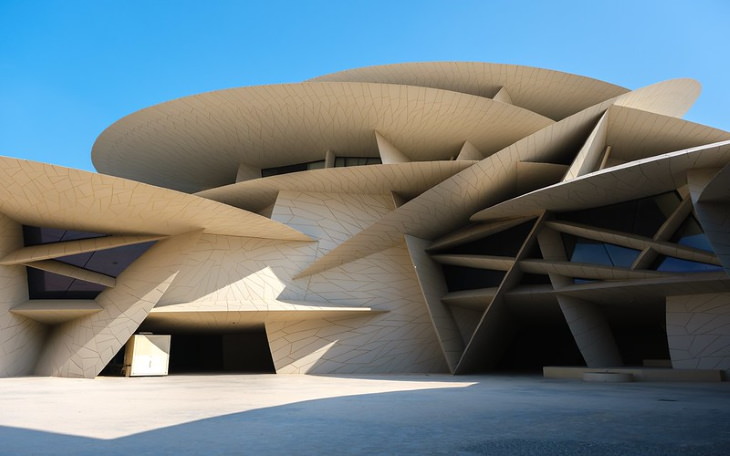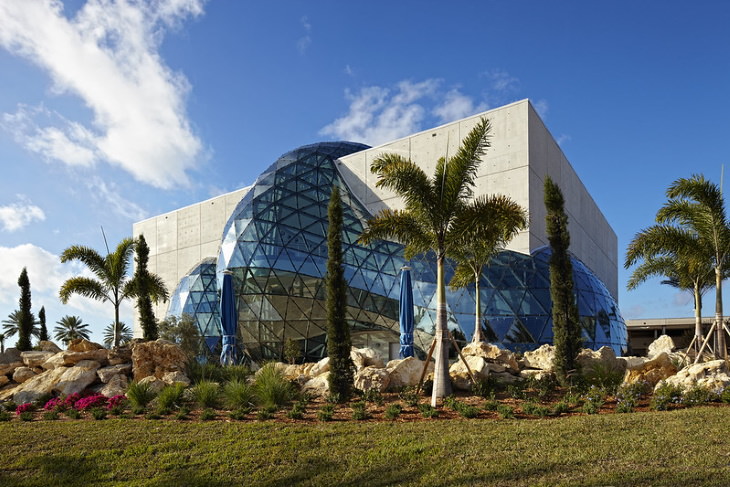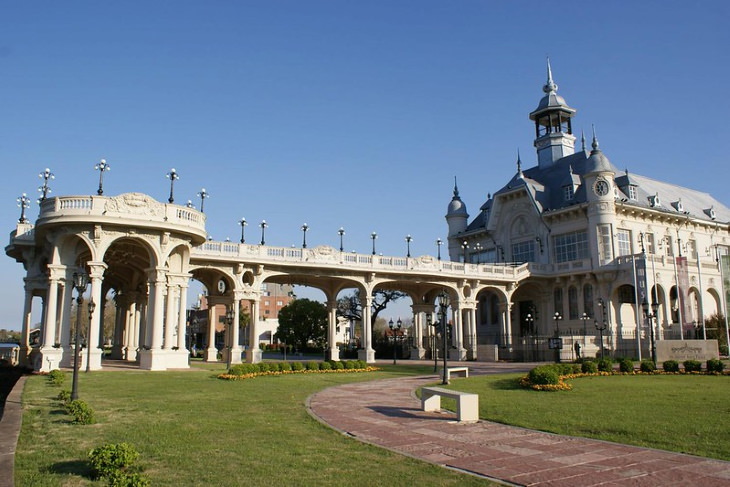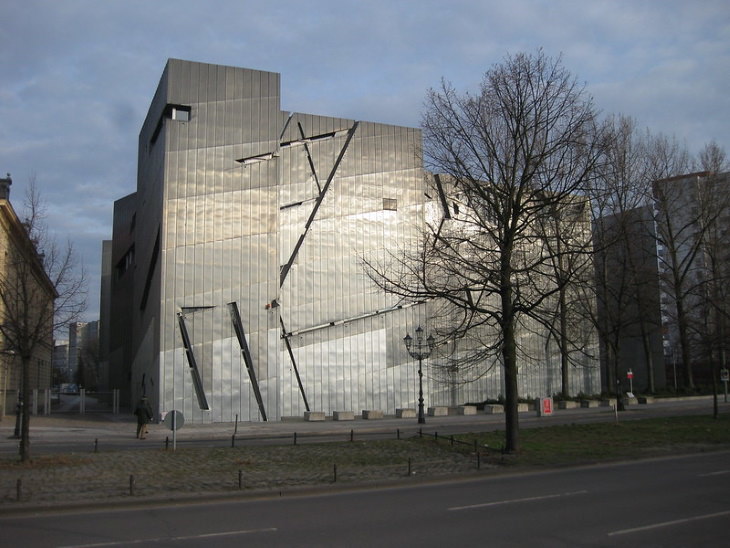1. The Shanghai Museum of Astronomy, China
Let’s start off this list with the newest museum of all - the Shanghai Museum of Astronomy. The museum opened to the public very recently - on July 18, 2021. The astronomical museum and is the world’s largest planetarium. The building was designed by Thomas J. Wong.
According to the architect, it is meant to invoke the orbital relationship between the Sun and Earth. The rounded shapes reminiscent of planetary orbits and the dome that appears like a planet give visitors an idea about the cosmos and astronomy even before they set foot inside. In addition to many astronomical exhibitions, the museum also has an observatory, a Digital Sky Theater, and a 78-foot (24 m) tall solar telescope.
2. The State Historical Museum in Moscow, Russia
The State Historical Museum of Russia is very different from the previous museum we mentioned. Founded in 1872, the historical museum is one of the oldest buildings on this list. It is the largest national museum in Russia, with a total of over 4.5 million exhibits ranging from prehistoric relics to priceless artifacts that once belonged to the imperial Romanov dynasty.
The museum building is an enormous red castle designed by Vladimir Osipovich Sherwood in the Russian Revival Style. The monumental red brick structure lies between Red Square and Manege Square in Moscow, and it’s quite an attraction!
3. The Erawan Museum in Bangkok, Thailand
The Erawan Museum is certainly one of the most unique museum buildings in the world. The museum is located in the Samut Prakan Province in Thailand, and it’s been open to visitors since 2003. A three-headed elephant sculpture is standing proudly atop the museum’s roof and protecting the priceless treasures hidden inside.
The 250-ton bronze elephant is designed by architect Khun Suwannee Napasawangwong, and some of the exhibits are actually housed in the sculpture itself. Withing the beautiful and richly adorned rooms of the 3-story museum, visitors will find the private collection of Khun Lek Viriyapant, the museum owner. Among the prized objects are ancient Chinese vases, statues of the Buddha, and other ancient religious objects.
4. The Milwaukee Art Museum, USA
Although the Milwaukee Art Museum was founded in 1888, its most intriguing architectural masterpiece was added much later, in 2001. The Quadracci Pavilion is a truly exceptional building - it has moving wings with a wingspan of 217 ft (66 m) that change position depending on the time of the day to provide shade and shield the building from extreme weather.
The moving building is believed to be the peak achievement of Santiago Calatrava, one of the most highly-regarded architects of our time. Read more about Calatrava’s work and life here - The Ethereal Architecture of Santiago Calatrava.
5. The Heydar Aliyev Center in Baku, Azerbaijan
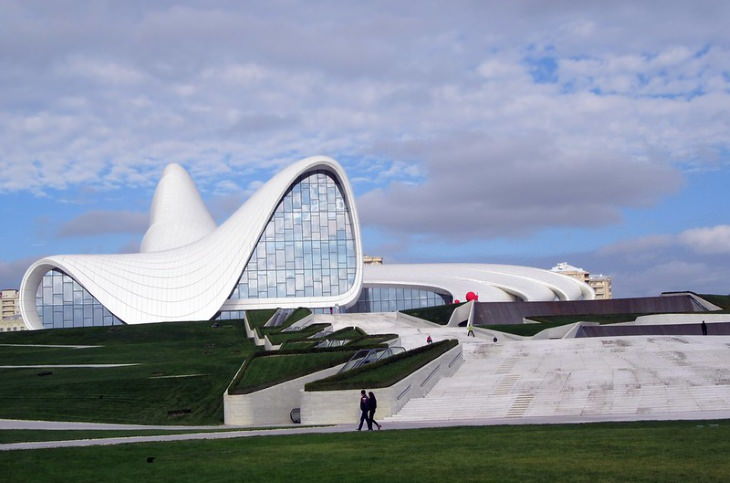
Speaking of influential contemporary architects, let’s look at another iconic museum created by Zaha Hadid. The Heydar Aliyev Center, named after Azerbaijan’s former president, is open since 2012. The building is an art gallery, museum, and conference hall all in one, and it’s considered to be one of the most notable examples of Hadid’s work.
The fluid, curvy lines of the building make it blend in with the natural landscape of the city instead of contrasting it. This fluidity is meant to be the architects’ interpretation of traditional Azeri calligraphy and other historical references. In 2014, Hadid won the Design Museum's Design of the Year Award, becoming the first woman to win the competition.
6. National Museum of Qatar in Doha, Qatar
As the name of the museum suggests, the National Museum of Qatar is dedicated to the history of Qatar and its people. The design of the museum’s building taps into the country’s unique landscape as well, as the discus-shaped walls of the structure invoke the ‘desert rose’ - a flower-like crystal formation that can be found in Qatar’s desert.
This creative idea was conceived by Jean Nouvel, a famous French architect. The museum was opened in 2019, and it features 11 galleries featuring various interactive exhibitions that involve all the senses - vision, hearing, and even the sense of smell. By design, each gallery offers a different experience.
7. The Salvador Dali Museum in St. Petersburg, Florida
The Dali Museum in St. Petersburg is one of the five museums in the world dedicated to the famed surrealist artist’s works. The museum was founded in 1982, while the artist was still alive, but the current building of the museum was only opened in 2011. The most prominent features of the new building are a glass entryway and skylight known as ‘the enigma,’ designed by Yann Weymouth.
The enigma is a bubble that consists of a thousand glass triangles. The bubble envelops the building and brings in a lot of natural light into the interior. For those of you familiar with Dali’s works, you can find the original of The Disintegration of the Persistence of Memory, along with dozens of other paintings, drawings, and sculptures by Dali at this museum.
8. The Museo de Arte Tigre in Buenos Aires, Argentina
If you want to imagine how luxurious the life of the rich and famous was at the beginning of the 20th century, there’s no better place than The Museo de Arte Tigre. Before becoming a museum, this elegant building functioned as a club for high society.
The building was constructed in 1912 by Pablo Pater and Luis Dubois, and it was meant to resemble a luxurious villa in French-Italian style, complete with French chandeliers and Venetian mirrors preserved to this day. Since 2006, the building became the home of a collection of 19-20th century Argentine art.
9. The Jewish Museum in Berlin, Germany
The new section of the Jewish Museum in Berlin is a building that tells a story. The structure is the largest European museum focused on Jewish history, and it consists of an older building and a 2001-addition next door designed by the Polish-American architect Daniel Libeskind.
The architecture of the building has gaps and voids. Inside the building, visitors will walk through empty rooms end up in dead ends. This is no coincidence and not the result of bad planning - all of these missing pieces are meant to express the loss caused by the Holocaust. This way, the building itself is meant to express the tragic and incredibly complicated history of the Jewish population in Germany from the Middle Ages until today.
10. Guggenheim Bilbao Museum, Spain
The last museum we will discuss in this article is the Guggenheim Bilbao Museum. It shouldn’t be confused with the older Guggenheim Museum in New York City designed by Frank Lloyd Wright. If you want to learn about that famous building, we describe it in detail here - The Uniquely Brilliant Architecture of Frank Lloyd Wright! Now onto the Guggenheim of Spain, the newer branch, so to speak.
Apart from being one of the largest museums in the country, it’s also one of the most varied and interesting modern art museums in the world, so everyone interested in modernist art and avant-garde art should definitely drop by. As you do, don’t miss out on the opportunity to admire the glorious building itself.
The seemingly chaotic and irregular shape of the building lies along the banks of the Nervión river and looks more like an abstract marine sculpture than a building. The exterior of the building feature 33,000 thin titanium sheets with a pattern of fish scales. The structure was envisioned by the world-famous Canadian-American architect Frank Gehry and completed in 1997.
Share these noteworthy museums with those who enjoy traveling and art!

